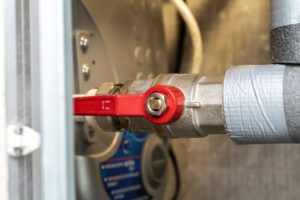 Pressure washers specifically have been used for cleaning many things such as patios, driveways, siding, or concrete. There are different pressure requirements for cleaning these other surfaces, and one pressure washer might produce too little or too much pressure when used on different surfaces. Unloader valves are a blessing in these kinds of environments, and they can be used to achieve the desired pressure range to be used on other surfaces. Adjusting the unloader valve on the pressure washer can be a little tricky if you do not know the proper steps. Still, there is no need to worry because we will discuss the methods of adjusting the unloader valve on the pressure washer.
Pressure washers specifically have been used for cleaning many things such as patios, driveways, siding, or concrete. There are different pressure requirements for cleaning these other surfaces, and one pressure washer might produce too little or too much pressure when used on different surfaces. Unloader valves are a blessing in these kinds of environments, and they can be used to achieve the desired pressure range to be used on other surfaces. Adjusting the unloader valve on the pressure washer can be a little tricky if you do not know the proper steps. Still, there is no need to worry because we will discuss the methods of adjusting the unloader valve on the pressure washer.
Things To Do Before Adjusting Unloader Valve
The procedure of adjusting the unloader valve on the pressure washer can vary according to the brand and the type of pressure washer, but the initial method is the same. Before adjusting the pressure washer unloader valve, you need to take preparatory measures.
- Set the pressure washer motor in the running position and maintain the engine’s rotation at around 3700 rpm without the load and 3400 rpm with the load. It is crucial for adjusting the unloader valve.
- Remove the nylon lock nuts from the top of the unloader valve and shut the pressure adjusting knob to remove it from the position.
- Remove the washer and the spring that is covered on the unloader valve. You shall see a threaded piston having two lock nuts after removing the spring and washer.
- Now use the wrench to lock these two nuts. It is better to apply just three threads off the bottom and then place the washer, spring, and locknut in their position.
- It is time to place the pressure gauge assembly between the pressure hose and the pump. Make sure that you connect the clipping so that you can easily see the pump and pressure hose while adjusting the unloader valve. This would be crucial for the perfect adjustment of the unloader valve.
How To Adjust The Unloader Valve
The procedure of adjusting the unloader valve on the pressure washer is an easy task now that you have done the previous settings. These are the steps to get the job done without any difficulty.
- First of all, turn the water supply on; the flow of water from the garden hose will remove any air trapped inside the pressure washer or the pump. Keep the valve open until all the air is released.
- Now start tightening the pressure spring while you have squeezed the gun trigger and watch for the points at which your pressure reaches the maximum.
- When the trigger is disengaged, the pressure spike should be at least 8 to 9 percent.
- The pressure spike should be less than 10 percent and if you cannot do that, make sure to move the nuts until you get the optimum pressure.
- If you are not getting the optimum pressure, there is no way except to open the nuts, washer, and spring again.
- Once the best spot is achieved, turn on and off the trigger gun at least 20 times to make the optimum break in the unloader valve. Also, make sure that the valve does not get hung up.
- Note the maximum pressure that is achieved is not too high. For example, if the set pressure is 3000 psi, the gauge should not go beyond 3300 psi when the trigger is turned off.
- Now that everything is done take a final check on the lock nuts, pressure spring, and pressure gauge, and everything is good.
Conclusion
Thus, if your pressure washer has the feature of the unloader valve, then you should use that to get the best cleaning effects. Do not go too dependent on the trigger or pressure reading and check the water pressure on the small surface. Also, note that the first water burst has more power and can potentially damage the surface, so it is better to point the pressure washer away from the surface at the start. Also, make sure to have an eye on the pressure gauge.
- 10 Best Budget Pressure Washer 2023 – Reviews & Buyer’s Guide - December 7, 2022
- 10 Best Pressure Washer for Cars Wash Reviews [2023] - December 6, 2022
- 10 Best Commercial Pressure Washer 2023 –Buyer’s Guide - December 5, 2022
